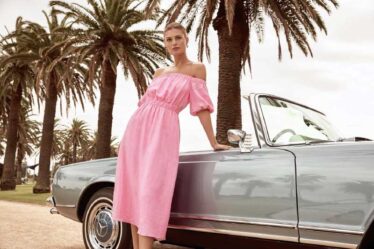
Merino wool sweaters from The Row with four-figure price tags are not going to save the planet. But the current loud moment for “quiet luxury” shares many characteristics with calls for more climate conscious consumption.
Define the seemingly ubiquitous vibe shift (in fashion writing at least) less by its sky-high price point and more by style and consumer mindset, and the similarities are clear. It’s about buying less, but better, investing in classic pieces that will last the test of time and seeking out quality materials.
Fashion brands are treating it like just another trend. They’re not wrong.
Historically, understated chic has done well in times of economic uncertainty — certainly a factor in the current fashion moment. To be sure, the cultural mainstreaming of climate concerns is helping to reinforce the marketing appeal of quality staples, making them feel like desirable, responsible choices, rather than boring.
What it adds up to though, is more consumption.
The appetite for “stealth wealth” dressing is showing up in surging sales at brands like Brunello Cucinelli and Zegna. Even ultra-fast-fashion label Shein got in on the action with a landing page dedicated to quiet luxury.
To address fashion’s climate impact, shoppers, particularly the wealthy, need to be buying less.
According to the Berlin-based think tank the Hot Or Cool Institute, consumers in rich countries should be limiting themselves to five new garments a year to stand a chance of keeping global warming at less than catastrophic levels.
For many, even that’s an indulgence more than a necessity. The average person shouldn’t need more than 74 to 85 garments and shoes (depending on the kind of climate they live in) to keep them covered for all occasions, according to the report. If that sounds limiting,in the 1960s the average French wardrobe consisted of about 25 outfits, or 40 pieces in total, and the country was considered the epitome of chic.
It’s hard to see a long-standing shift in shopping habits in the current fashion moment, especially as trend cycles move so fast these days.
The Cut’s already called time on quiet luxury, making the point that its elitist undertones are out of touch with the “eat the rich” mentality associated with the new generation of consumer. It’s a criticism of inaccessibility and affordability that has plagued the sustainable fashion movement too.
But ultimately, tackling fashion’s environmental footprint isn’t about a particular style, it’s about the way we shop. And so far, that’s not changing.
For more BoF sustainability coverage, sign up now for our Weekly Sustainability Briefing by Sarah Kent.



